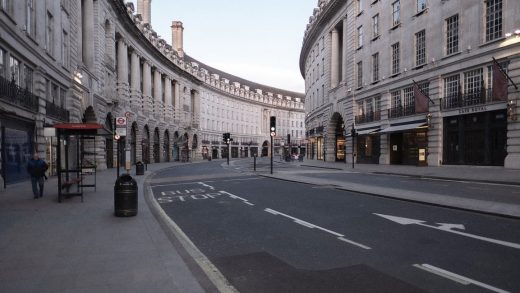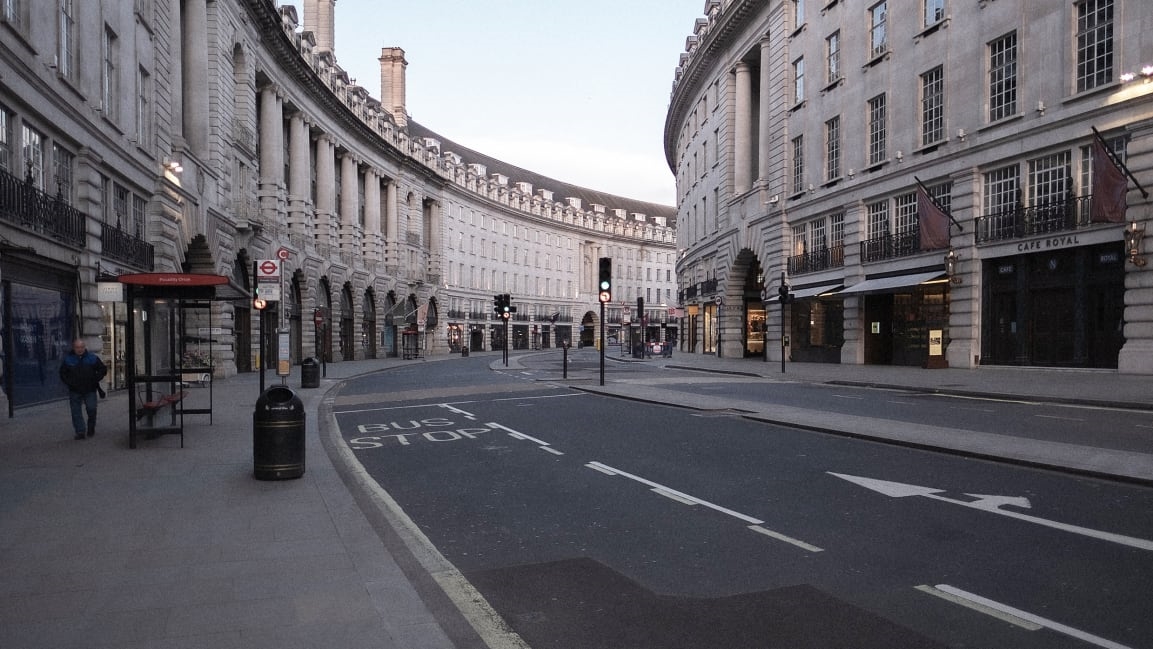London is transforming its center into a car-free zone to create more distancing when it reopens
Before the pandemic, roughly two million people rode London’s subway system every day, often packed on crowded cars at rush hour. As the city tries to figure out how workers can safely commute when more businesses reopen, it wants people to avoid public transit when possible—but not to switch to driving. To help make it easier to bike and walk to work, the city is creating a massive car-free zone in the center of the city.
“We will need many more Londoners to walk and cycle to make this work,” mayor Sadiq Khan said in an announcement of the plans today. “That’s why these plans will transform parts of central London to create one of the largest car-free areas in any capital city in the world.”
Some streets in the city’s financial center will be limited to cyclists and pedestrians, while others will also allow buses, but no cars. (Emergency vehicles and vehicles for those who are disabled will still be allowed.) London Bridge and another nearby bridge may also be restricted to buses and people on foot or bike. While the size of the area covered has not yet been released, it appears to cover the entirety of the city’s central “Square Mile.”
The city is widening sidewalks and adding bike lanes in other areas, and working with boroughs—the neighborhood governments that control most of the city’s streets—to consider similar car-free zones in other parts of the sprawling city. It’s also reintroducing its congestion charge, a fee that drivers have to pay to enter the central city.
Without the right infrastructure, many commuters will turn to cars, and the city wants to avoid a steep increase in congestion and pollution. “What we’re seeing from elsewhere in the world is we do face a situation which is a lot of people are going to go toward cars if we don’t give them a decent alternative,” says Simon Munk, infrastructure campaigner at the nonprofit London Cycling Campaign. “So I think most politicians, most people in London, recognize we’re now in a race in terms of getting loads of cycle schemes. . . . I think there’s a widespread recognition now across the political spectrum in London that we do not want to go back to the levels of motor traffic that we saw before, and the air pollution and road danger and inactivity and climate emissions that came with that.”
The city is still under lockdown, but COVID-19 cases are falling, and there is a short window of time to prepare before the economy reopens. “We don’t know yet how many people can work from home,” Munk says. “We don’t know how many people want to go back. What we do know is when [Prime Minister] Boris Johnson started talking easing the lockdown, almost instantly, the bus and tube services that were running were overwhelmed, and the images were terrifying. So it’s a very delicate situation.”
Other cities, including Milan, are also racing to add space for pedestrians and cyclists to prepare for shrinking public transit. Paris is accelerating plans to build long-distance bike lanes for suburban commuters. In the U.S., on a smaller scale, Seattle now plans to permanently limit traffic on some streets that were closed when the pandemic began. In some cases, cities were already moving to reduce traffic, but the pandemic transformed timelines. “We’ve been talking about it for years and years and years, if not decades, but very little of London has gone car-free,” says Munk. “So for the mayor to be talking about the size of area he’s talking about, that’s a huge change.”
(21)



